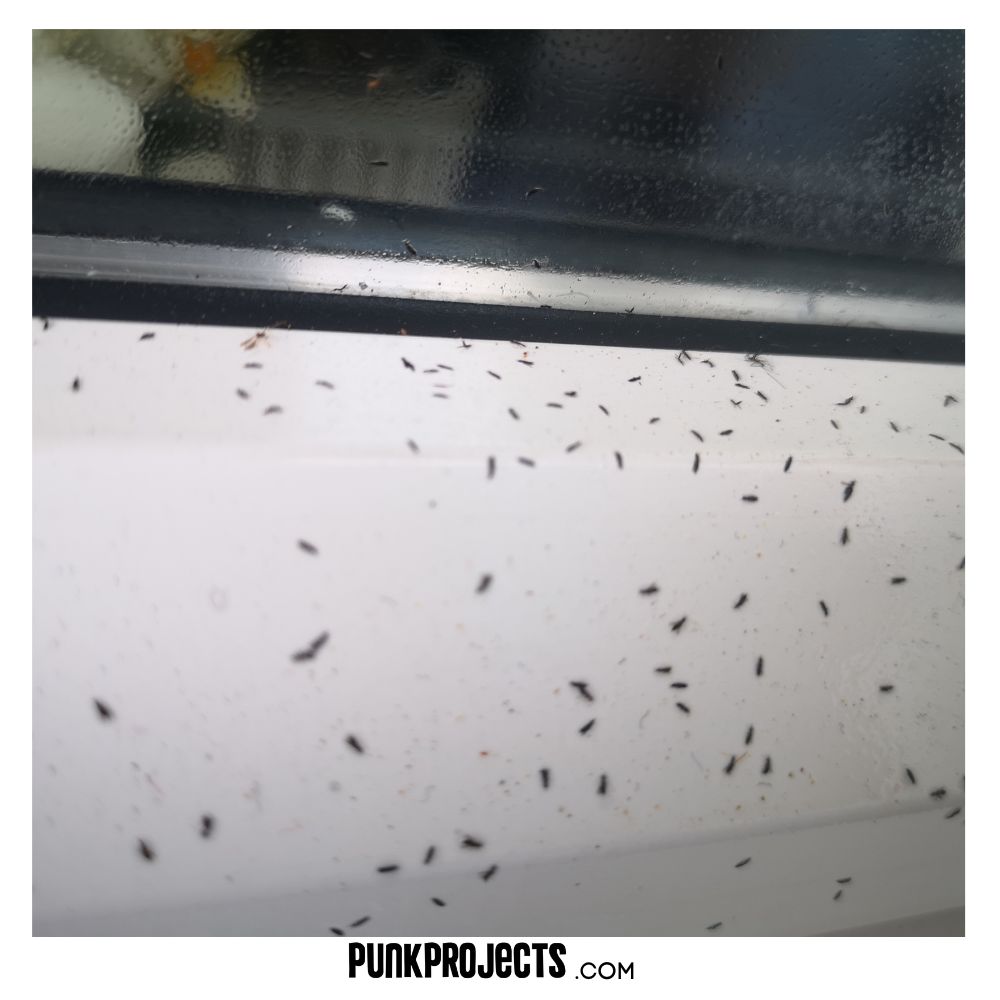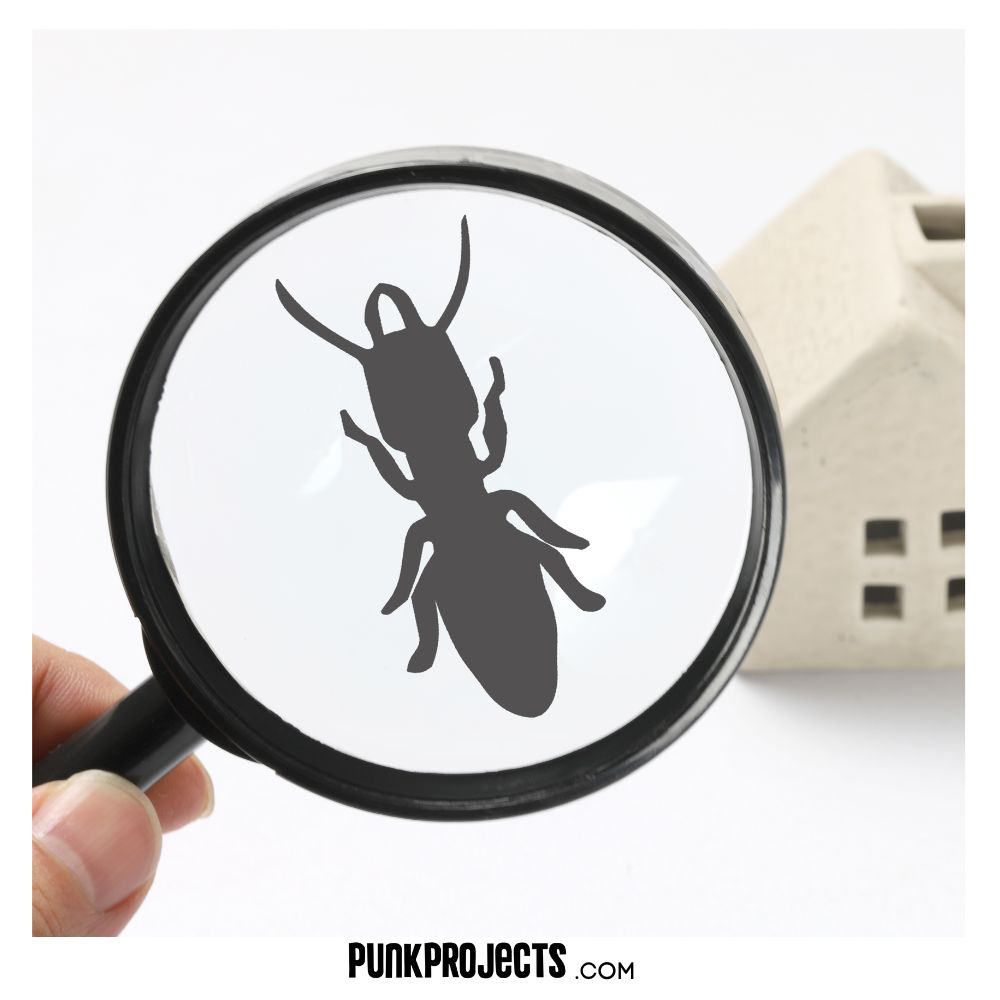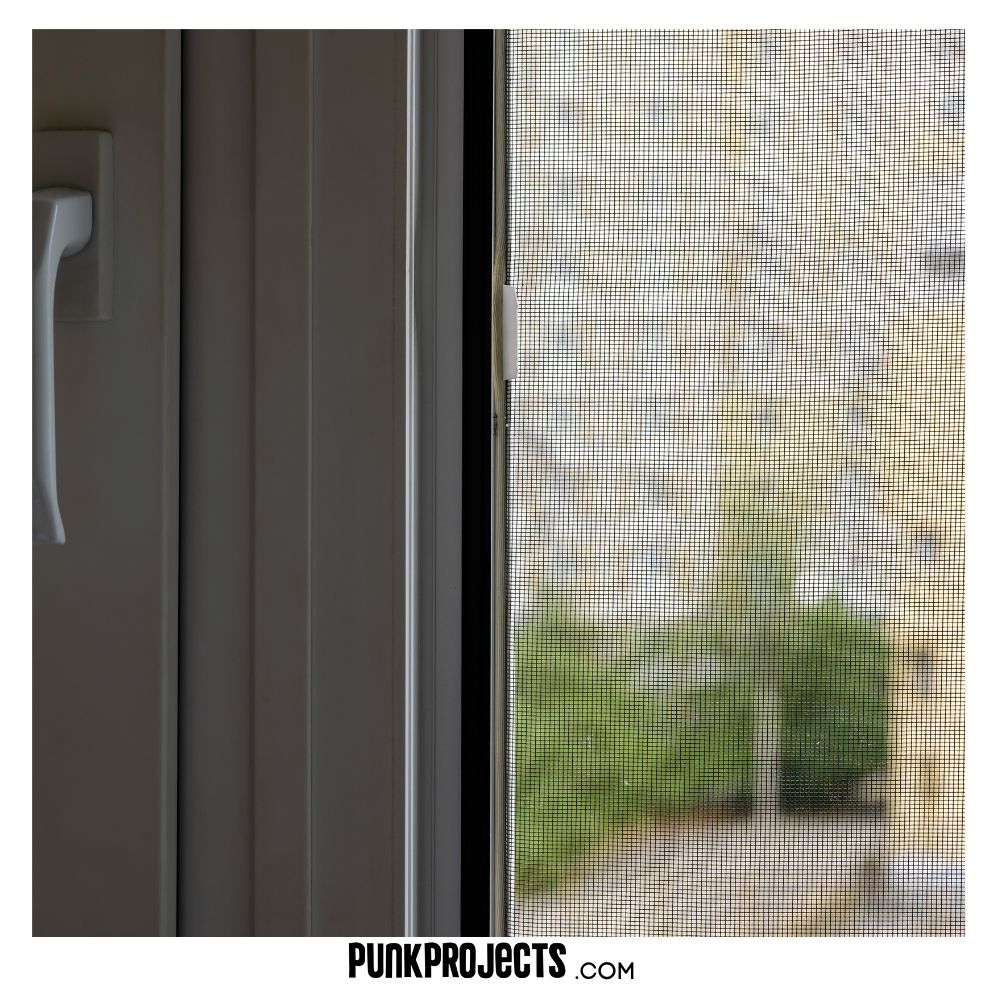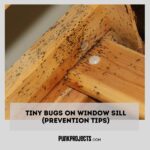If you have ever noticed tiny bugs on your window sill, you are not alone. These pesky little creatures can be quite a nuisance and may leave you wondering where they came from and how to get rid of them. The most common types of tiny bugs found on window sills include fruit flies, gnats, and ants.
Here is what you need to know about Tiny Bugs On Window Sill:
What is Tiny Bugs On Window Sill?

Have you ever noticed those small insects that are really hard to see without squinting or using a magnifying glass? We call them “tiny bugs.” They come in all sorts of shapes and colors and can be found both inside our homes and outdoors. You might have encountered ants, aphids, fleas, bedbugs, fruit flies, gnats, spider mites, or booklice – they all fall under the category of tiny bugs.
Identification of the bugs
To identify the bugs on your window sill, equip yourself with the knowledge provided in this section. Learn about the common types of bugs found on window sills and recognize them using visual cues. Description and visual cues are the key solutions to identifying the bugs accurately.
Description of common types of bugs found on window sills
Windowsills often host a variety of bugs. Identifying them is essential to prevent and address issues they may cause. Here’s a description of common ones:
- Ants: Tiny, drawn to food and moisture. Can quickly infest an area if not treated.
- Spiders: Build webs to catch prey. Most are harmless, but some can bite.
- Earwigs: Long, pincers at the end. Nocturnal, seek shelter in dark and damp places.
- Silverfish: Silvery-blue, fish-like movements. Attracted to damp environments, feed on starchy substances.
- Cockroaches: Easy access to food, carry diseases and cause allergic reactions.
Each bug requires specific solutions for removal and prevention. Flies are attracted to light and food; cleaning and sealing gaps help deter them.
An interesting fact: According to the National Pest Management Association, ants are the most common household pests in the U.S.
Visual cues for identifying the bugs
Bugs come in various shapes and sizes – from elongated to round or oval. Check the coloration – it can be vibrant or camouflaged.
Wings? Some have, some don’t. Notice if they cover the entire body or only a part. Leg count and structure – that’s important too! Plus, antennae differ in size and shape. And don’t forget other features like appendages, mouthparts, and patterns. But, no touching! Use magnifying tools for safe viewing. When stumped, consult field guides or an entomologist.
Causes of the infestation

To understand the causes of the infestation of tiny bugs on window sills, delve into the environmental factors that attract bugs and possible sources of the infestation. Explore how these factors contribute to the presence of these bugs and gain insight into effective solutions.
Environmental factors that attract bugs to window sills
Bugs are often drawn to window sills due to environmental factors. Sunlight and warmth make it a perfect spot for bugs to hang out. Plus, food sources like crumbs or plants nearby increase the chance of bug infestations.
Plus, moisture can also attract bugs. Water droplets on windows or from pipes close by offer insects the moisture they need to live. This can make window sills even more appealing to bugs.
Certain plants or flowers placed near windows can also bring in bugs. Insects are naturally attracted to pollen and nectar, so having these resources near windows can lead to more bug activity.
It’s important to remember that bugs on window sills are not just annoying, but can be dangerous too. Mosquitoes for example, can spread illnesses like dengue fever or West Nile virus. So, it’s important to take steps to stop bug infestations.
The NPMA suggests keeping windows clean and sealed properly to reduce bug entry. Regular maintenance and cleaning of window sills will reduce factors that attract bugs and keep them away from your living areas.
Possible sources of the infestation
The causes of infestation can be varied, but they all help its spread and continuation. Knowing the possible sources is critical to efficiently stop and prevent future infestations.
- Unhygienic environments: If hygiene isn’t kept up properly, such as not discarding food waste correctly, then pests can find a home and thrive.
- Cracks and holes in buildings: Tiny gaps in walls, floors, and ceilings can let pests in easily.
- Contaminated objects: Furniture, appliances, or clothes that are infested can introduce pests if not checked.
- Close by natural habitats: Pests may move from forests or water close to human dwellings into buildings.
- Waste management issues: Not securing trash bins or disposing of garbage wrong can draw pests looking for food.
- Inadequate pest control: Routine inspections, proper pest control methods, and regular maintenance must be done to avoid infestations.
Be aware that each infestation may have its own causes. These must be identified and worked on.
A survey from the National Pest Management Association revealed that 73% of home infestations started from objects brought inside, such as second-hand furniture or clothing.
Potential risks and complications
To better understand the potential risks and complications related to tiny bugs on the window sill, explore the following sub-sections: Health concerns associated with the presence of bugs, and Damage to the window sill and surrounding areas.
Health concerns associated with the presence of bugs
Bugs are a potential risk to our health. Bed bugs, mosquitoes, and ticks can pass on diseases, cause allergies, and their bites can make us itch and swell. So, taking action is essential.
Mosquitoes can spread malaria, dengue fever, and Zika virus. Bed bugs can infest bedding and furniture, and their bites can trigger allergies. Ticks can give us Lyme disease, leading to joint pain, fatigue, and other issues.
To protect ourselves, we need to:
- Inspect and clean bedding regularly.
- Use mosquito nets or repellents outdoors.
- Keep our surroundings clean. Proper sanitation systems discourage bug breeding, and there’s less food and hiding places for them.
Damage to the window sill and surrounding areas
Moisture can cause mold and insects, and both can be a health risk. To avert this, homeowners must act fast when they see window sill damage. Don’t wait, or it could be more costly and dangerous. Act now to secure your house and guarantee the window system lasts. Take action and avoid future issues.
Prevention and control measures

To prevent and control the infestation of bugs on your window sill, you can follow a few steps. Additionally, natural remedies can be explored for bug control. If the situation worsens, you may also consider professional extermination options.
Steps to prevent bugs from infesting window sills
Windows sills can be a breeding ground for bugs! This can cause frustration and even health risks. To stop infestations, do the following:
- Cleanliness is key. Regularly remove standing water, debris, or food particles that could attract bugs. Wipe the sills with a disinfectant cleaner too.
- Seal gaps and cracks. Bugs can enter through small openings, so check window frames. Use caulk or weatherstripping to seal these.
- Install screens. This makes a physical barrier, preventing bugs from entering and letting air in. Make sure the screens fit well and are not torn.
- Remove nearby attractants. Trim plants near windows. Keep firewood away, as it can have insects.
- Use natural deterrents. Essential oils like peppermint, lavender, or citronella can stop bugs. Humans like these smells too!
Remember, different bugs may need special steps. Be alert – new pests may show up and you’ll need to adjust. Read also 15 Screen Door Alternatives (Provide Ventilation, Insect Protection and Aesthetics)
Natural remedies for controlling bugs
Essential oils, like lavender, peppermint, and eucalyptus, have a natural ability to repel insects. Mix some drops with water, then spray around the home or garden.
Plant basil, rosemary, and lemongrass in a garden, or keep potted plants inside, to stop bugs from entering.
Make a DIY bug trap with a shallow dish of soapy water near areas where bugs gather.
Vacuuming regularly eliminates bugs hiding in carpets or crevices. Empty the vacuum bag outside to prevent them from coming back.
Coffee grounds are a great way to keep bugs away from plants. The coffee smell is a deterrent without damaging the environment. A research conducted by the University of Florida (source) showed that natural remedies are good at controlling bug populations, and don’t need harmful chemicals. This study supports natural methods for pest control.
Professional extermination options
- Chemical treatments! Pest control pros use sprays or baits to get rid of ants, roaches, and termites.
- Heat treatments use high temperatures to kill bed bugs.
- Fumigation seals off an area and fills it with fumigants to eliminate rodents and insects.
- Biological control introduces predators or parasites to stop pests’ life cycles.
- Trap and removal catches and removes rodents in a humane way, no harm done.
- Structural repairs help repair damage and block entry points to stop future pest issues.
Maintaining hygiene and cleanliness is important too.
Extermination services eliminate existing pests and prevent future infestations.
Final tips for maintaining bug-free window sills
Keep your window sills bug-free with these helpful tips!
- Clean regularly: Make a habit of cleaning your window sills. Use mild detergent or vinegar to remove dirt and debris. This will get rid of existing bugs and stop new ones from entering.
- Seal cracks and gaps: Bugs can enter through small openings. Inspect and seal off any cracks using caulk or weatherstripping. This will keep bugs out and maintain a bug-free environment.
- Use natural repellents: Natural insect repellents like essential oils or herbs can be used to repel insects from your window sills. Citronella, peppermint, and lavender are known to be effective. Simply apply a few drops of the essential oil or place the herbs near your windows.
For further protection, install screens on windows. This will act as an additional barrier against bugs while letting fresh air in.
By incorporating these steps into your regular maintenance routine, you can enjoy a pest-free home! Take action today and say goodbye to bug-infested window sills for good.
Why do I have tiny bugs on my window sill?
There are several reasons why you may have tiny bugs on your window sill. These bugs are attracted to light and heat, so they are naturally drawn to windows. Additionally, they may enter through small gaps or cracks around the window frame.
Are these tiny bugs harmful?
In general, these tiny bugs on your window sill are harmless to humans. They do not bite or sting and are not known to transmit diseases. However, their presence can be a nuisance and may indicate unsanitary conditions in your home.
How can I get rid of tiny bugs on my window sill?
To get rid of tiny bugs on your window sill, start by thoroughly cleaning the area. Use a vacuum cleaner or a damp cloth to remove any visible bugs. Seal any gaps or cracks around the window frame to prevent further infestation. If the problem persists, you may need to consult a pest control professional.
How can I prevent tiny bugs from coming back?
To prevent tiny bugs from returning to your window sill, keep the area clean and free of food particles or crumbs. Regularly wipe down your window sill and vacuum any potential hiding spots. Additionally, consider using window screens or sticky traps to block their entry points.
Should I be concerned if I see a large number of tiny bugs on my window sill?
If you notice a large number of tiny bugs on your window sill, it may indicate a more significant infestation or an underlying issue. In such cases, it is advisable to seek professional help to determine the exact cause and appropriate treatment.
I am a multi-talented designer and contractor with over 10 years of experience in the field. I have a passion for creating beautiful, innovative spaces that reflect my clients’ needs and styles. My skills include architectural design, interior design, space planning, project management and construction supervision.






